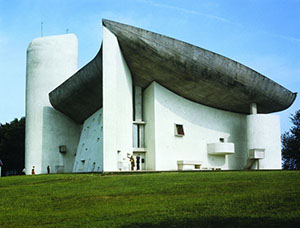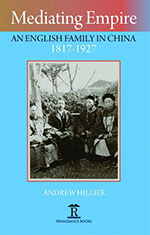*/
Finding solace in today’s pressurised world; a reflective cultural life and times
By Andrew Hillier QC
I was extremely fortunate coming to the Bar in the early 1970s, when legal aid was in plentiful supply and employment law was in its infancy. I was also fortunate in having gone to Trinity College, Dublin; a fantastic and vibrant place to spend four years (I went when I was 17) and one of the few to offer a course in what was then called ‘the law of master and servant’. I quickly developed a fascination for the subject, thanks to the inspirational teaching of Kader Asmal, leader of Ireland’s highly effective anti-apartheid movement and, later, a minister in President Mandela’s government. Much of the course was history-based, tracing the emergence of trade unions and the fight for even the most basic employment rights. In my practice, it was the events in everyday working lives that principally interested me and still do. I was also very fortunate to spend the first 25 years in a delightful common law set, followed by 11 KBW – and to have been part of the collegiate world of the employment Bar.
There was time, then, to pursue other interests; a lunchtime concert or a visit to the nearby Courtauld Gallery and its superb Cezannes. I was drawn to the cosmopolitan world of Lawrence Durrell’s Alexandria Quartet, now sadly neglected, Paul Scott’s Raj Quartet and Joseph Conrad’s novels, particularly Lord Jim, with its exploration of a man who is tested and found wanting, and spends his life seeking to redeem himself.

The Barbara Hepworth Museum Sculpture Garden.
I retired eight years ago, but I am still involved in a number of pro bono projects – as a trustee of Advocate, a volunteer adviser at South West London Law Centres and chair of the Employment Legal Advice Network (ELAN), which is sponsored by Trust for London and is working to coordinate the response of London agencies to the current crisis, in which the Bar and solicitors are also making a massive, if unsung, contribution.
I have spent most of my time using the story of my forbears in China to explore the relationship between family and empire. I completed my PhD at Bristol University, where I am now an Honorary Research Associate and the resulting book, Mediating Empire, examines how family provided a mechanism for mediating relations between Britain and China. Using diaries, letters and photographs, I enjoy describing the lives of men, women and children far from home and am now editing the letters of my great-great grandmother from Hong Kong, Shanghai and England.
In terms of art, I have a love of stone, both in its natural state, whether a rugged outcrop on the Yorkshire moors or a rock set in a Buddhist temple garden in Kyoto, and in the hands of a sculptor like Barbara Hepworth, whose St Ives studio is a magical space, and whose work is so brilliantly shown in the new Wakefield gallery. The simplicity and timelessness of stone can be evoked by a tray of pebbles on a window sill in Kettle’s Yard and in the roving lines that Richard Long has traced across the landscape. Captured in the writings of Robert Macfarlane, this spirit can be found in buildings as varied as a small Romanesque church in the Welsh borders and Le Corbusier’s chapel at Ronchamp, a symbol of peace overlooking a landscape devastated by war. Like Matisse’s chapel in Vence, it shows how a non-believer can design an intensely spiritual space. This same spirit can be found in music – in a Bach suite for solo cello or in the Busch Quartet’s playing of Beethoven’s Cavatina. However pressurised and traumatic life can be, and, for many, no more so than at the present time, these will always provide solace and comfort. So also will the work of Seamus Heaney. In poems, which often seem to be sculpted out of the landscape, stones are a recurring image, whether the dry stone walls or the querns which ‘just kept turning up’ in County Mayo.

The Le Corbusier chapel at Ronchamp.
And so, the single object I would keep by me would have to be one of my own stones, but which of the many should I choose? Perhaps the one lifted from the river bank, deep in the Malaysian rainforest, or the two exquisitely patterned pebbles, which a grandson took from the Lindisfarne shore in Northumberland. In the end I go for the stone I found one hot summer’s day many years ago. It was sparkling in the glistening waters of the River Tarn and, if it has now lost some of that sparkle, it still rests comfortably in my hand, just as it did on the day that I found it. For me, it best reflects Eliot’s elusive mix of memory and desire.

Mediating Empire by Andrew Hillier QC was published by Renaissance Books in April 2020. My Dearest Martha: The Life and Letters of Eliza Hillier will be published in October by Hong Kong City University Press. For details, see: andrewhillier.org
I was extremely fortunate coming to the Bar in the early 1970s, when legal aid was in plentiful supply and employment law was in its infancy. I was also fortunate in having gone to Trinity College, Dublin; a fantastic and vibrant place to spend four years (I went when I was 17) and one of the few to offer a course in what was then called ‘the law of master and servant’. I quickly developed a fascination for the subject, thanks to the inspirational teaching of Kader Asmal, leader of Ireland’s highly effective anti-apartheid movement and, later, a minister in President Mandela’s government. Much of the course was history-based, tracing the emergence of trade unions and the fight for even the most basic employment rights. In my practice, it was the events in everyday working lives that principally interested me and still do. I was also very fortunate to spend the first 25 years in a delightful common law set, followed by 11 KBW – and to have been part of the collegiate world of the employment Bar.
There was time, then, to pursue other interests; a lunchtime concert or a visit to the nearby Courtauld Gallery and its superb Cezannes. I was drawn to the cosmopolitan world of Lawrence Durrell’s Alexandria Quartet, now sadly neglected, Paul Scott’s Raj Quartet and Joseph Conrad’s novels, particularly Lord Jim, with its exploration of a man who is tested and found wanting, and spends his life seeking to redeem himself.

The Barbara Hepworth Museum Sculpture Garden.
I retired eight years ago, but I am still involved in a number of pro bono projects – as a trustee of Advocate, a volunteer adviser at South West London Law Centres and chair of the Employment Legal Advice Network (ELAN), which is sponsored by Trust for London and is working to coordinate the response of London agencies to the current crisis, in which the Bar and solicitors are also making a massive, if unsung, contribution.
I have spent most of my time using the story of my forbears in China to explore the relationship between family and empire. I completed my PhD at Bristol University, where I am now an Honorary Research Associate and the resulting book, Mediating Empire, examines how family provided a mechanism for mediating relations between Britain and China. Using diaries, letters and photographs, I enjoy describing the lives of men, women and children far from home and am now editing the letters of my great-great grandmother from Hong Kong, Shanghai and England.
In terms of art, I have a love of stone, both in its natural state, whether a rugged outcrop on the Yorkshire moors or a rock set in a Buddhist temple garden in Kyoto, and in the hands of a sculptor like Barbara Hepworth, whose St Ives studio is a magical space, and whose work is so brilliantly shown in the new Wakefield gallery. The simplicity and timelessness of stone can be evoked by a tray of pebbles on a window sill in Kettle’s Yard and in the roving lines that Richard Long has traced across the landscape. Captured in the writings of Robert Macfarlane, this spirit can be found in buildings as varied as a small Romanesque church in the Welsh borders and Le Corbusier’s chapel at Ronchamp, a symbol of peace overlooking a landscape devastated by war. Like Matisse’s chapel in Vence, it shows how a non-believer can design an intensely spiritual space. This same spirit can be found in music – in a Bach suite for solo cello or in the Busch Quartet’s playing of Beethoven’s Cavatina. However pressurised and traumatic life can be, and, for many, no more so than at the present time, these will always provide solace and comfort. So also will the work of Seamus Heaney. In poems, which often seem to be sculpted out of the landscape, stones are a recurring image, whether the dry stone walls or the querns which ‘just kept turning up’ in County Mayo.

The Le Corbusier chapel at Ronchamp.
And so, the single object I would keep by me would have to be one of my own stones, but which of the many should I choose? Perhaps the one lifted from the river bank, deep in the Malaysian rainforest, or the two exquisitely patterned pebbles, which a grandson took from the Lindisfarne shore in Northumberland. In the end I go for the stone I found one hot summer’s day many years ago. It was sparkling in the glistening waters of the River Tarn and, if it has now lost some of that sparkle, it still rests comfortably in my hand, just as it did on the day that I found it. For me, it best reflects Eliot’s elusive mix of memory and desire.

Mediating Empire by Andrew Hillier QC was published by Renaissance Books in April 2020. My Dearest Martha: The Life and Letters of Eliza Hillier will be published in October by Hong Kong City University Press. For details, see: andrewhillier.org
Finding solace in today’s pressurised world; a reflective cultural life and times
By Andrew Hillier QC


Chair of the Bar reflects on 2025
Q&A with criminal barrister Nick Murphy, who moved to New Park Court Chambers on the North Eastern Circuit in search of a better work-life balance
Revolt Cycling in Holborn, London’s first sustainable fitness studio, invites barristers to join the revolution – turning pedal power into clean energy
Rachel Davenport, Co-founder and Director at AlphaBiolabs, reflects on how the company’s Giving Back ethos continues to make a difference to communities across the UK
By Marie Law, Director of Toxicology at AlphaBiolabs
AlphaBiolabs has made a £500 donation to Sean’s Place, a men’s mental health charity based in Sefton, as part of its ongoing Giving Back initiative
Are you ready for the new way to do tax returns? David Southern KC explains the biggest change since HMRC launched self-assessment more than 30 years ago... and its impact on the Bar
Professor Dominic Regan and Seán Jones KC present their best buys for this holiday season
Oscar Davies shares their lessons learnt
Little has changed since Burns v Burns . Cohabiting couples deserve better than to be left on the blasted heath with the existing witch’s brew for another four decades, argues Christopher Stirling
Pointillism, radical politics and social conscience. Review by Stephen Cragg KC